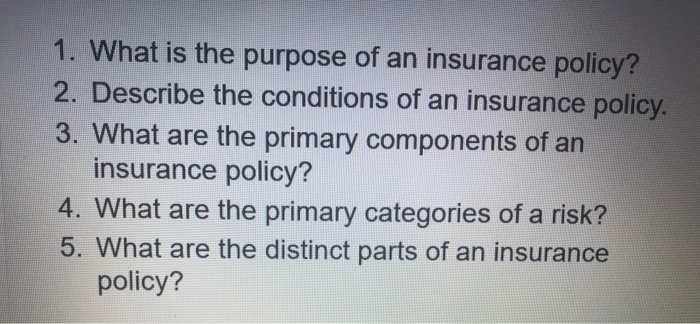The smart Trick of Pacific Prime That Nobody is Talking About
Wiki Article
8 Easy Facts About Pacific Prime Described
Table of ContentsThe Basic Principles Of Pacific Prime Pacific Prime Fundamentals ExplainedThe 10-Minute Rule for Pacific PrimeSome Known Incorrect Statements About Pacific Prime The Basic Principles Of Pacific Prime

This is due to the fact that the data were collected for a period of solid economic efficiency. Of the estimated 42 million people that were without insurance, almost regarding 420,000 (about 1 percent) were under 65 years old, the age at which most Americans end up being eligible for Medicare; 32 million were grownups between ages 18 and 65, around 19 percent of all adults in this age; and 10 million were youngsters under 18 years old, about 13.9 percent of all youngsters (Mills, 2000).
These estimates of the number of persons without insurance are produced from the annual March Supplement to the Existing Populace Survey (CPS), carried out by the Demographics Bureau. Unless otherwise noted, national quotes of individuals without health insurance policy and proportions of the population with different sort of insurance coverage are based on the CPS, the most extensively made use of source of quotes of insurance coverage and uninsurance prices.
Pacific Prime - An Overview

Still, the CPS is particularly beneficial since it produces yearly quotes fairly quickly, reporting the previous year's insurance coverage approximates each September, and due to the fact that it is the basis for a regular collection of quotes for greater than twenty years, enabling evaluation of trends in coverage in time. For these factors, along with the substantial use the CPS in various other studies of insurance policy protection that are provided in this report, we count on CPS estimates, with limitations noted.

The estimate of the variety of uninsured people increases when a populace's insurance coverage condition is tracked for numerous years. Over a three-year period beginning early in 1993, 72 million people, 29 percent of the U.S. https://on.soundcloud.com/Boznd6XKBGjyrspT8. population, lacked coverage for at the very least one month. Within a solitary year (1994 ), 53 million individuals experienced at least a month without insurance coverage (Bennefield, 1998a)
Six out of every ten without insurance grownups are themselves utilized. Although working does improve the chance that one and one's member of the family will have insurance, it is not a guarantee. Even members of households with 2 full-time breadwinner have nearly a one-in-ten opportunity of being without insurance (9.1 percent uninsured rate) (Hoffman and Pohl, 2000).
Pacific Prime - Truths
New immigrants represent a substantial percentage of individuals without medical insurance. One evaluation has attributed a considerable portion of the current development in the dimension of the U.S. uninsured population to immigrants that arrived in the country in between 1994 and 1998 (Camarota and Edwards, 2000). Recent immigrants (those that came to the USA within the past four years) do have a high price of being uninsured (46 percent), however they and their children account for simply 6 percent of those without insurance across the country (Holahan et al., 2001).The connection in between medical insurance and accessibility to care is well developed, as documented later in this chapter. The connection between wellness insurance policy and health end results is neither direct nor straightforward, a substantial professional and health solutions research study literature web links health and wellness insurance coverage to enhanced access to care, far better quality, and boosted personal and population wellness condition.
Levels of analysis for taking a look at the effects of uninsurance. It concentrates especially on those without any type of health and wellness insurance for any size of time.
The Ultimate Guide To Pacific Prime
The issues encountered by the underinsured remain in some aspects comparable to those dealt with by the without insurance, although they are typically less severe. group insurance plans. Uninsurance and underinsurance, however, include clearly different policy concerns, and the approaches for addressing them may differ. Throughout this research and the 5 reports to follow, the main focus gets on individuals without any medical insurance and hence no aid in paying for health and wellness care beyond what is available via charity and safeguard establishments
Health insurance is a powerful aspect influencing invoice of care because both people and medical professionals react to the out-of-pocket cost of solutions - https://penzu.com/p/79996ae8dade0171. Wellness insurance policy, nonetheless, is neither necessary neither adequate to access to medical solutions. The independent and straight effect of wellness insurance policy coverage more on accessibility to health and wellness services is well developed.
Others will get the healthcare they require even without medical insurance, by spending for it out of pocket or seeking it from providers who provide treatment complimentary or at highly subsidized rates. For still others, medical insurance alone does not make sure invoice of care since of other nonfinancial obstacles, such as a lack of healthcare suppliers in their community, minimal access to transport, illiteracy, or etymological and cultural distinctions.
The Single Strategy To Use For Pacific Prime
Formal research study about without insurance populations in the USA dates to the late 1920s and early 1930s when the Committee on the Expense of Medical Treatment created a collection of reports concerning financing medical professional office sees and hospitalizations. This issue became salient as the numbers of medically indigent climbed during the Great Clinical depression.Report this wiki page